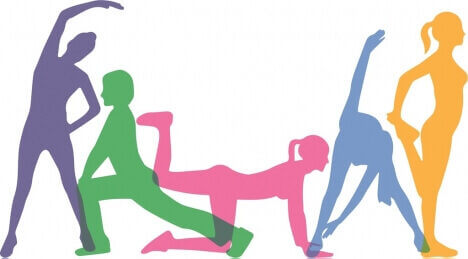Everyone knows that fitness is important to health. Especially when wanting to lose weight. Without the application of exercise weight loss will not happen very successfully. Being fit is highly desirable. However, if you have slipped away from regular activity, or are wanting to try a new or harder type of exercise there are often some obstacles that get in the way,
The biggest challenge is usually just getting started. You CAN do it!
The next barrier that many people come up against is pain. This can make working out a little less inciting. The soreness in the muscles that you get the day or two after an intense work out is called Delayed Onset Muscle Soreness (DOMS for those in the line of bodywork). It happens because of your building muscle! It is also due to lactic acid, a by-product of exercise. A few tips on minimizing this:
- Find a good trainer. Someone that will work with you at your level. Too much too soon will cause more soreness. Start slow and build gradually. Working out doesn’t have to hurt.
- Have a good work out. One that includes a warm-up, cool down and stretching. A trainer can help with this
- Stay hydrated. If you’re sweating more you need to replace your fluids. Drink more water. It’s simple, so do it.
- Eat well. If you’re not getting enough of certain minerals (magnesium, potassium, calcium) or electrolytes you can get muscle cramps. A proper diet is also important to support muscle development, a changing metabolism, and increased demand for energy. I always recommend working with a professional, like a holistic nutritionist, that will help you meet your individual needs and save you the guesswork.
- A contrast shower. After a work out have a hot shower, finish the last 30 seconds with cold water. This will help to “flush” out the lactic acid.
- If you missed the first 5 points and are sore the next day have a hot bath with half a cup of Epsom salts, a hot tub, or sauna.
- Practice good form. This is where a good trainer can help. It is so much better to do an exercise correctly, slower, and with less intensely once, than to do it fast or with poor form 10 times to avoid injuries. Pilates is excellent for bringing body awareness.
- Address injuries. Generally, movement is good the body, but if something hurts more than a little, check you’re technique. If it hurts a lot, listen to your body; don’t do it. Have someone help you resolve and rehabilitate completely from your injuries. This is where I highly recommend Osteopathy. Osteopathy can help to restore proper body mechanics, improve circulation, reduce pain, and promote healing. It helps you get to the cause of injuries that can slow you down.
- Rest. This is important to allow your body time to recover, repair muscle and injuries. By rest I mean sleep. If you practice good sleep habits and still don’t sleep well you may benefit from having an Osteopath Manual Practitioner help balance your nervous system.
Pain is a signal from your body to change what you’re doing or to address an injury. The sooner you deal with pain the sooner you’ll enjoy the activities you want to do. Work with professionals that understand the body. Your health is an investment: Take care of your body and your body will take care of you.

